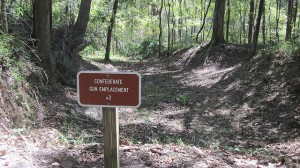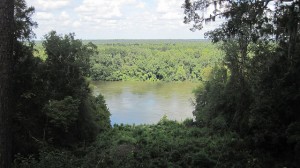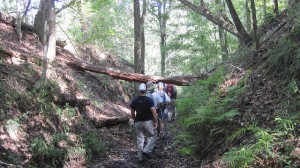Torreya State Park (pronounced Tor-ee-ah) is located about 55 miles west of Tallahassee and roughly 13 miles north of the town of Bristol, Fl. Both the park and the nearly extinct Torreya trees (Torreya taxifolia) that can still be found here bear the name of Dr. John Torrey, a renowned 18th century botanist. Hiking at Torreya presents a challenging and refreshing change of pace for hikers looking to get away from Florida’s flatter terrain.
The endangered Torreya, a species of conifer, is one of the rarest trees in the world and only about 200 remain within the park boundaries. The Torreya, also known as gopher wood and rumored to be the source of the wood that Noah used to build the Ark, seems to have been a victim of deforestation and a subsequent blight in the 1960s that has almost completely annihilated the Torreya. The few remaining Torreya are found in sheltered ravines near the river.
Historical Torreya
In the early 1800s during the first Seminole War, Andrew Jackson marched troops across the river at this location. Many indians were relocated to camps along the Apalachicola river, and archeological evidence has been uncovered in several sites around the park.
Torreya’s location along the river played an important role during the Civil War and six cannons were placed along the river to defend against Union gunboats. Though the cannons are no longer in place, cannon embankments can still be seen along the trail today. Remarkably, Torreya was never engaged in battle during the civil war.
In addition to Torreya’s hiking system is the old Gregory House perched on a high bluff overlooking the Apalachicola River. The Gregory House, built in 1849 by Jason Gregory, originally occupied a location on the opposite river bank at Ocheesee Landing and was moved to its current location in 1935 by the Civilian Conservation Corp.
There are a few tales of the house being haunted by the former occupants. One account relates the story of a wife of one of the original owners. She would often hear footsteps on the staircase at night and decided to sit up one night with friends to solve the mystery. To their amusement it turned out to be several flying squirrels attempting to haul crab apples up the staircase. An apple got loose from them and “bump, bump, bumped” its way back down the staircase.
Camping and Hiking at Torreya
Torreya has over 16 miles of hiking trails for all skill levels. Weeping Ridge Trail is perhaps the shortest of the park’s trails and takes hikers to a view of one of the deep ravines. After a full day exploring the trails, hikers may want to take advantage of the parks camp ground and relax for the evening.
RV camping, tent camping and one air-conditioned Yurt (Year-round Universal Recreational Tent) is available at the Weeping Ridge campground located inside the park. Book in advance when trying to secure the Yurt for accommodations as it is a much sought after refuge during the hot summer months. There is a beautiful overlook at the campground to relax at and enjoy after a long day of hiking.
Additional Resources:
Voices of the Apalachicola by Faith Eidse





I grew up right across the river from Torreya in Calhoun County. It’s a terrific park, full of history and ecological treasures.
Thanks for sharing!